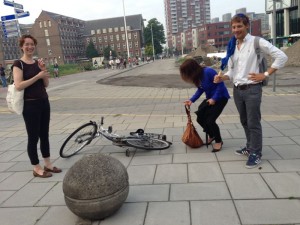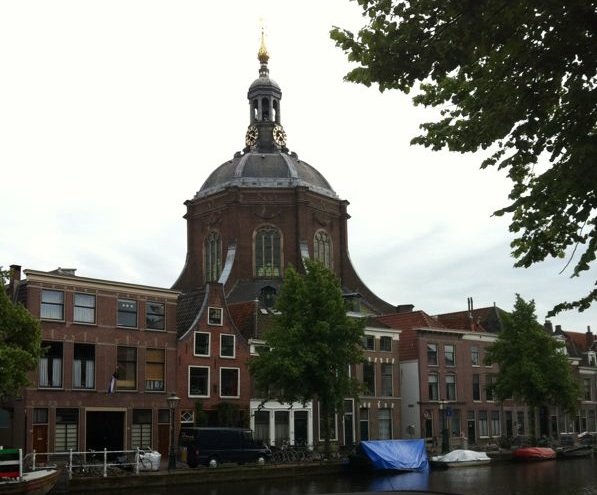From the natty acronym ‘EUSARNAD’ it’s pretty apparent that most of the collaborative programs are cross-continental, between the European Union (that’s the ‘EU’ part) and South Africa (you might have guessed, the ‘SA’). But the idea behind it is not just to allow researchers to complete current research in environments, using techniques and tools they wouldn’t usually have access to, but also to allow those researchers to build links and create communicative networks that might yield future collaboration.

It took a while before I was able to manage to cycle around on the bike I was kindly leant without reducing the people around me to breathless laughter at my incompetence…
A case in point was my trip to Leiden University Medical Centre. At Southampton, we have a number of projects that EUSARNAD takes an interest in, from developing new experimental models of anxiety (the ‘7.5% CO2 model’) to using these models to evaluate various psychological and pharmacological anxiety treatments.
One aspect of our department that we are currently developing is the use of neuroimaging to further evaluate models/treatments. Neuroimaging, using Magnetic Resonance Imagining (MRI) is much touted as a way to ‘look inside a living brain’. While, as with any scientific tool, there are certain caveats to it’s usefulness, it’s certain that it’s an extremely powerful tool which will, as methods are refined, become more and more useful over the coming decades. I learnt some MRI techniques under the tutelage of JP Fouche at the CUBIC institute, and when I came back to Southampton I was determined to create an opportunity to use these skills.
I didn’t realize it at the time, but the EUSARNAD scheme had already given me everything I needed. I met Nienke Pannekoek and Steven van der Werff at the University of Cape Town while I was there, and it was immediately obvious that we shared a lot of beliefs about the future of anxiety research. We kept in touch, and when Nienke suggested that I spend some time at the LUMC, I jumped at the chance. She offered me the opportunity to meet the rest of her department, learn some of the MRI analysis methods they were familiar with, and observe some of their experimental techniques.

This picture was actually one I took to use as navigation – (un)fortunately Leiden is so full of historical sites and striking architecture that it wasn’t that helpful!
Although I was only working in the LUMC for two weeks, I really was given an insight into a busy clinical facility that makes the most of its excellent neuroimaging facilities. I observed and took part in studies, I attended presentations, and I was given ample opportunity to poke my nose into anywhere I fancied. Furthermore, the LUMC researchers were interested in the work we’re doing in Southampton, and the different cognitive, clinical and experimental methods we employ. This mutual interest really does bode well for future work together, and is a perfect example of the EUSARNAD scheme achieving its goals.
(Even this post was a collaborative effort between me (Ben) and Nienke Pannekoek).
